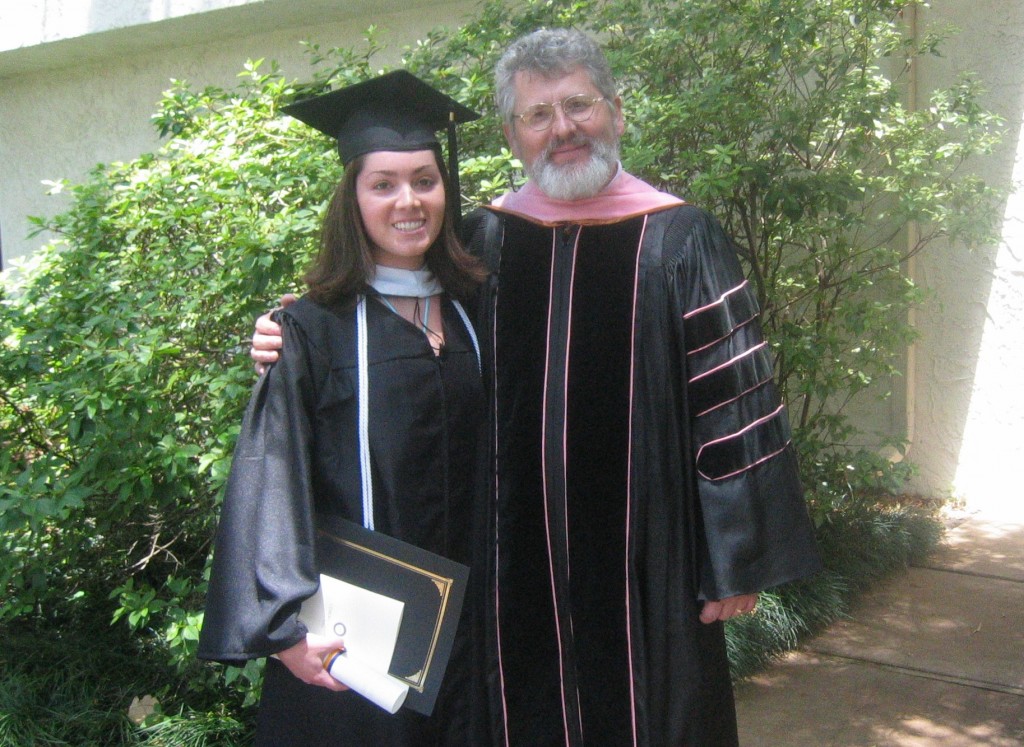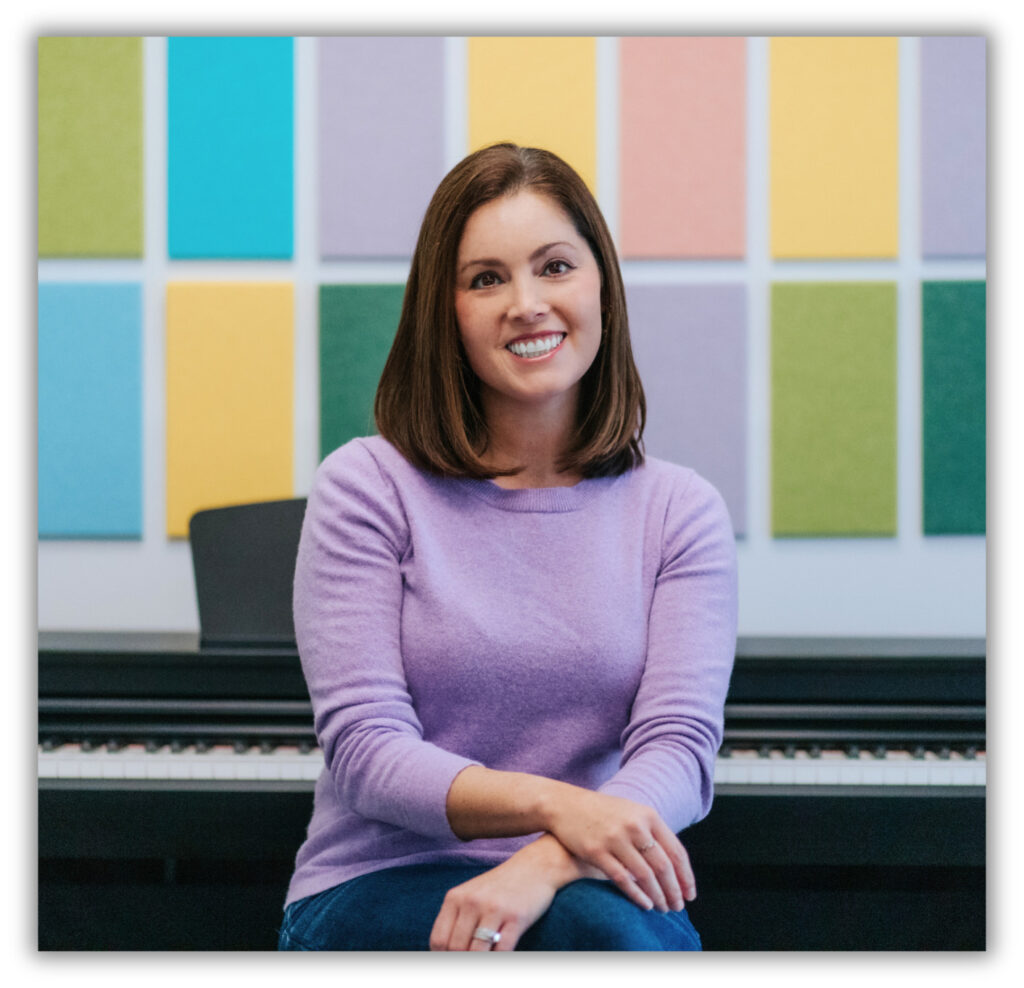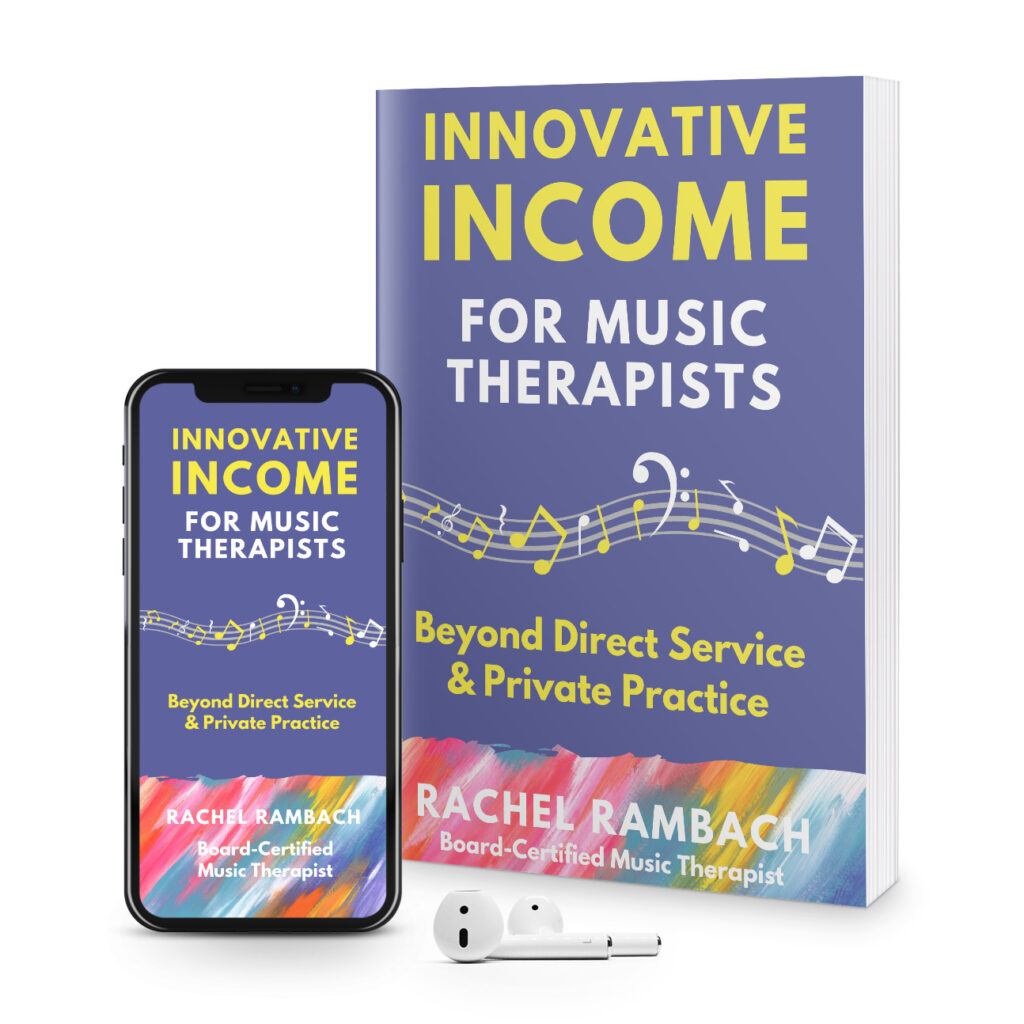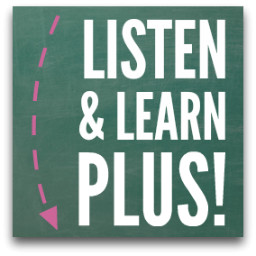by Rachel | Uncategorized

I have this man to thank for my career in music therapy. Dr. John Sinclair, or “Doc” as everyone calls him, was the head of the music department at Rollins College during my undergraduate years, and still is today. He directed the ensembles in which I sang, and I had him as a professor for several classes.
But it was one particular class he taught that changed my path; I can’t remember the name of it, but I remember the pivotal assignment. Doc asked us to choose a career in the music field and write an in-depth research paper on it. I was a vocal performance major, and had dreams of becoming a professional singer. But I wanted to learn about something new, so I did a Google search for “careers in music”. Music therapy was one of the top hits.
I read everything I could on the internet about music therapy that day, and on Monday morning, I went straight to Dr. Sinclair’s office. “Doc, I know what I’m going to write my paper about, and I’ve found my future career!” It turns out that Doc knew all about music therapy, and offered to contact a music therapist he knew who had just moved to the Orlando area.
A week later, I had written my paper and begun job shadowing his music therapist friend. I watched her in action at a nursing home, with private students taking adapted lessons, and with an early childhood group. She told me all about her coursework as a music therapy student, and spent hours answering all of my questions. I was even more convinced that music therapy was for me.
I was in the second semester of my sophomore year at the time, and couldn’t stand the thought of waiting another year and a half to graduate and go on to grad school for music therapy. So when my advisor told me that I had enough credits to graduate after the first semester of my junior year, I only hesitated a little. Did I really want to leave college — my friends, my sorority, this beautiful campus — 1.5 years early? It was hard, and I got a lot of flack from my friends, but I did it anyway.
I applied to and was accepted at several schools in Florida, including FSU and University of Miami. But in the end, I returned to Illinois and ended up an hour north of my home, at Illinois State University. I was sad to be back in the cold; however, I couldn’t pass up a full ride to graduate school. It ended up being worth it, though, since it was at ISU where I fell in love with my now-husband :)
So that’s my story of finding music therapy. I was inspired by similar stories shared by my colleagues, including Nat Mullis and others. What’s your story — whether you found music therapy or another career for which you were meant?
by Rachel | Uncategorized

There’s been a lot of buzz about this book in the music therapy world for the last few months. Why? Because the protagonist is a music therapist! That doesn’t happen very often (in fact, I only know of one other book where that is the case), which is why it has caused such a stir.
So of course when the book came out, I made a mad dash to my computer to download the audio version and started listening right away. It’s safe to say that I enjoyed it, considering I finished the book in just a few days.
Sing You Home is not just about music therapy, to be sure. Jodi Picoult tackles several big issues, including infertility and same-sex marriage. As with all of her other books, there are emotional highs and lows, twists and turns, and my favorite aspect of her writing — wonderful character development.
Zoe, the main character who is a music therapist, came alive for me after just a chapter or two. I felt like I knew her, and the same went for the other characters. It was so much fun to listen to the descriptions of her music therapy sessions — I kept forgetting I was reading a mainstream novel!
Many of the sessions she led in the book sounded similar to the kinds of things I do in my own sessions, although she worked with a wider range of populations than I. Zoe faced many of the same struggles that we as music therapists do, including having to explain what she does repeatedly and having to stand up for music therapy as an evidence-based treatment modality.
I don’t want to include any spoilers, so I’ll leave you with this: read the book. And not just because music therapy is involved! It’s beautifully written, fast-paced, and makes you think. Have you read it yet?
by Rachel | Uncategorized

Today, I’d like to share a letter I received from a teacher in Texas on behalf of her students past, present and future. I’ve mentioned her several times, and she is a member of Listen & Learn Plus. As music therapists, these are just the words we need to hear from time to time.
Esteemed Music Therapists,
Thank you. If you have not heard those words this week, thank you. Rachel mentioned in a recent blog she had a moment of doubt whether or not her therapy had an impact on a particular student. Most probably we have each struggled with this doubt at one time or another. However, I will attest your music and therapy does. Time and space do not allow me to recount the myriad of times music has opened closed doors for my students.
As a prekindergarten teacher I think maybe we share some of the same frustrations when it comes to advocating for our profession. At times both those inside and outside the education community lack an understanding of what we do and the impact it has on our students. Those of us who rely on music, and music therapists, as an integral part of our instruction know–especially those like me whose only musical talent is pressing a button on a CD player or iPod. If we have failed to thank you, let me do that now. If you have times of frustration, if others ask questions that show a lack of understanding, bring to mind one student, one moment when it was clear your gift to these souls was evident. Please keep using your gifts to open avenues of communication and cognition for our students.
Thank you, Rene, for your beautiful letter and for supporting music therapy. Your students are lucky that you understand the benefits of music, and that you use it to teach them regularly.
by Rachel | Uncategorized

I came down with laryngitis for the first time as an 11-year-old in the 6th grade. Little did I know that it would be the first of many, many cases that would disrupt auditions, performances, competitions, and eventually, work responsibilities.
As someone who makes her living as a music therapist, studio teacher, and occasional performer, my voice is my livelihood. I’m a one-woman show, and I don’t have a substitute therapist or teacher I can call in when my voice goes MIA. Needless to say, that old phrase “the show must go on” resonates deeply with me.
Take this afternoon, for instance. I’m scheduled to lead an early childhood music class that is open to the public; not everyone who might attend is on the email list. So I have no choice but to show up and do the best I can to provide an enriching musical experience for those families.
I’ve done it many times before, both in this setting and in others, and there are a few techniques I rely on to avoid a total FAIL of a class or music therapy session.
- Many of my students love to perform for each other, and this is the perfect time to let them have an impromptu talent show.
- Lead movement-based activities that rely on imitation rather than verbal instruction.
- Sign along to meaningful recorded music and have students follow.
- Let students take turns leading musical activities or interventions.
- Pass out percussion instruments and have a drum circle.
- Use color-coded lyric sheets to lead handbell playing.
- Student-facilitated songwriting and lyric analysis. They talk, I write and/or play.
And the one big no-no: DO NOT FORCE YOUR VOICE. That sentence deserves capital letters. I used to do it all the time despite warnings from my doctor, but I know now that it’s just not worth it in the long run. Besides, there are lots of different ways to make music beyond singing. What can you add to my list?
(A final note — as much as I love MacGyver-ing my way through life as a music therapist with laryngitis, I really like to sing and would very much appreciate good vibes sent my way for a speedy recovery!)
by Rachel | Uncategorized

Last summer, I received an email notifying me that a former student’s family had donated $2,000 to my music therapy program at The Hope Institute. Needless to say, I couldn’t wait for school to start so that I could take inventory of our current instrument collection and decide what to add to it.
Rainsticks, jingle bells, tambourines, cabasas, and a Q-Chord were immediately added to the list, as were all 5 Garageband Jam Packs. And then, a few months later and with a little over $1,000 of the donation remaining, my music therapy intern suggested that we order some new hand drums.
I took the drums with me to classrooms for the first time this week, and they definitely did not go unnoticed. Students and co-workers oohed and aahed when they spied them on my cart in the hallway, and it was apparent that the drums had quickly replaced the shaky fruit as their instrument of choice.
Karen (my intern) and I are using these drums to address all kinds of objectives, including the concepts of slow/fast, soft/loud, counting, 1:1 correspondence, imitation, and more. But I don’t consider myself a drumming expert at all, so for those of you who are, what are some cool ways I can incorporate these drums into my music therapy sessions? (I’m looking at you, Kat Fulton!)








